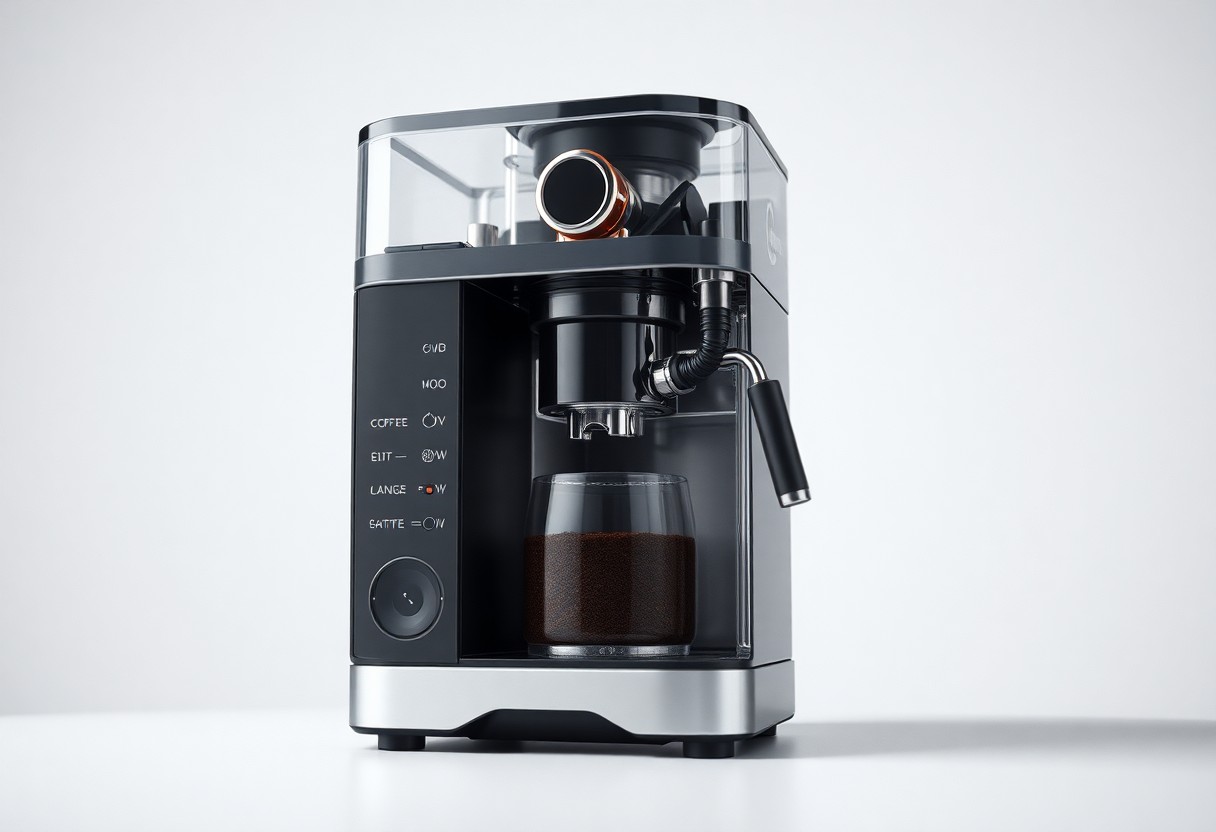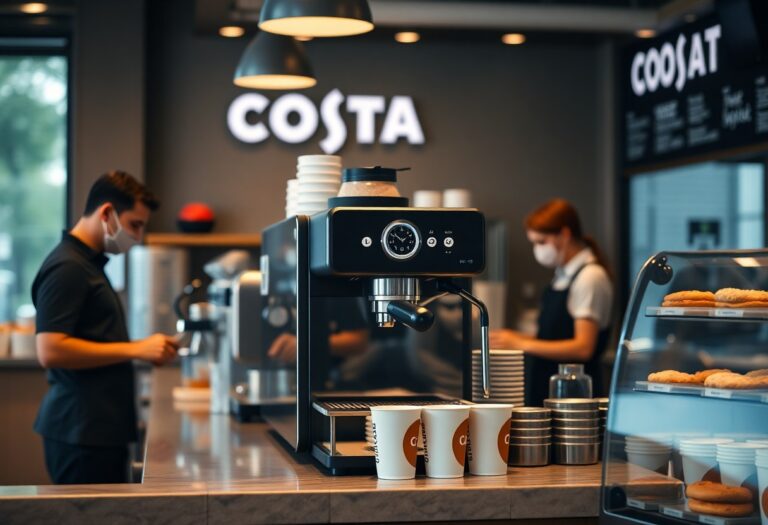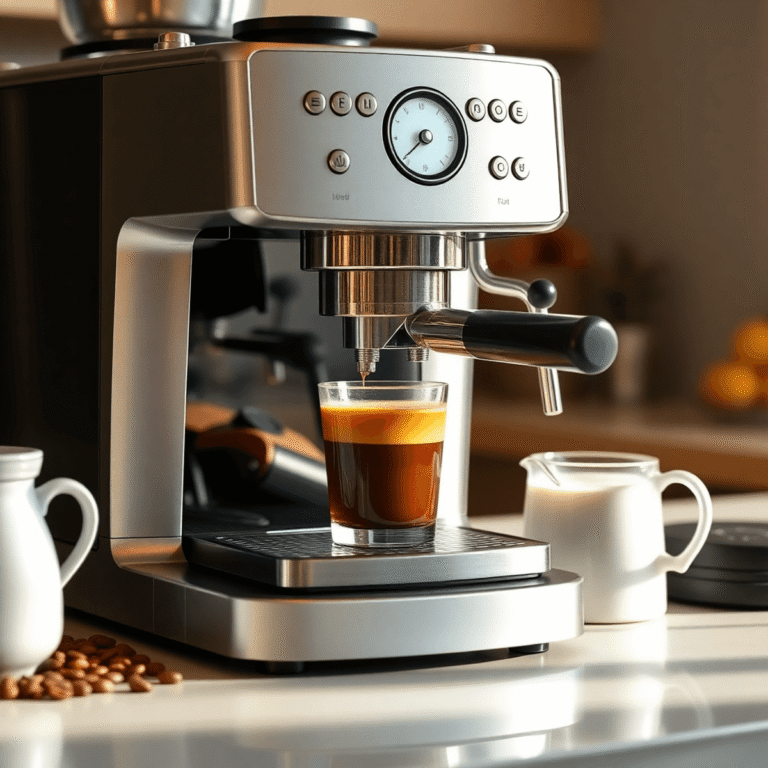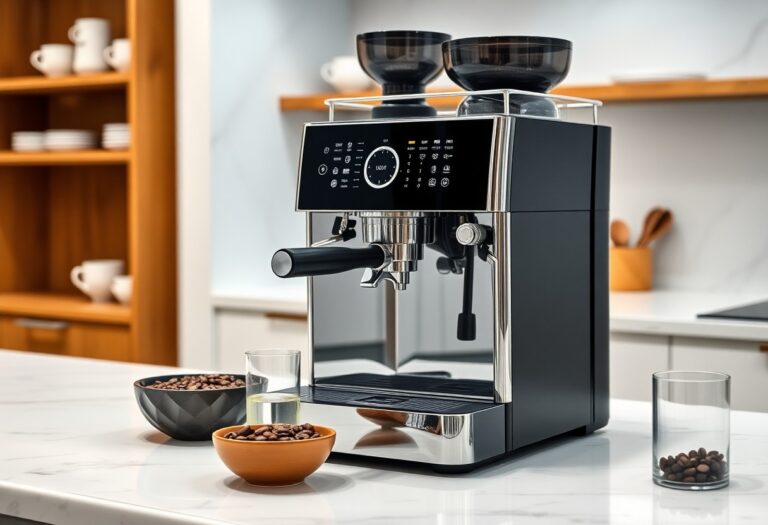What are the Parts of a Coffee Machine – Component Guide
Many coffee enthusiasts find themselves wondering about the intricate workings of their beloved coffee machines. Understanding the various components of your machine not only enhances your brewing experience but also aids in maintenance and troubleshooting. From the boiler that heats your water to the group head where magic happens, each part plays a vital role in crafting that perfect cup. If you’re eager to dive deeper, check out The Complete Guide to Espresso Machine (and Grinder!) … for an extensive breakdown.
Key Takeaways:
- Coffee machines typically consist of several main components including the water reservoir, heating element, and brewing chamber.
- The water reservoir holds the water that will be heated and used to brew the coffee.
- The heating element is responsible for warming the water to the optimal temperature for extraction.
- The brewing chamber allows coffee grounds and hot water to interact, resulting in the final coffee beverage.
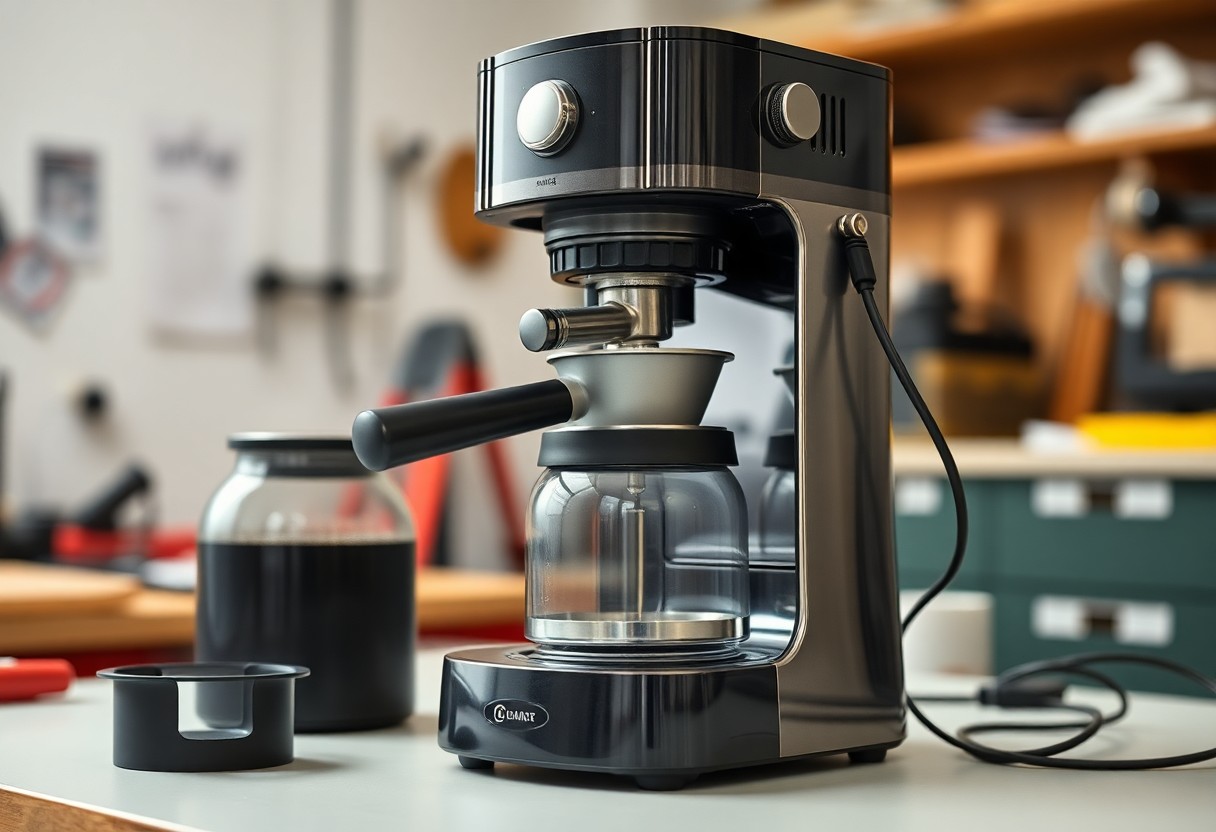
The Power Source: Electricity and Heating Elements
Your coffee machine’s power source is vital for delivering the energy necessary to brew coffee. This primarily involves electricity, which powers the whole system, and heating elements, responsible for reaching the optimal water temperature for extraction. An efficient power source ensures your coffee is brewed consistently and at the right flavor profile. Understanding these components allows you to appreciate how they contribute to your daily cup of coffee.
How Voltage and Wattage Influence Brewing
Voltage and wattage play a significant role in determining the performance of your coffee machine. Voltage affects the energy delivered to the heating element, while wattage indicates the power consumption of the appliance. For instance, machines with higher wattage can reach brewing temperatures more quickly, reducing wait times and improving efficiency. Choosing a coffee machine with the right power specifications ensures you enjoy your favorite brew just the way you like it.
The Role of Heating Elements in Temperature Control
Heating elements are integral to maintaining precise temperature control in your coffee machine. They directly influence the brewing process, as water temperature strongly impacts flavor extraction. Most coffee machines utilize either thermoblock or traditional boiler heating systems, with thermoblocks heating water on demand for rapid brewing. Understanding how these elements work allows you to select a coffee machine that meets your temperature preferences and brewing style.
| Thermoblock | Heats water on demand for quick brewing |
| Traditional Boiler | Maintains a reservoir of hot water for consistent temperature |
Temperature control depends significantly on the type of heating element employed in your machine. Each system has its benefits—while thermoblocks can be quicker and more energy-efficient, traditional boilers may provide more consistent heating across multiple cups. This consistency is vital for espresso lovers who rely on precise temperatures to achieve their desired flavor profiles. By understanding these differences, you can choose a coffee machine that best suits your brewing needs and enhances your coffee experience.
| Quick Brewing Time | Allows for fast preparation of coffee |
| Consistent Temperature | Ensures uniform flavor extraction |
Brewing Mechanisms: Understanding Extraction Efficiency
Extraction efficiency hinges on how well a coffee machine extracts flavors, oils, and acids from coffee grounds. This process is influenced by several factors, such as brew temperature, water flow rate, and grind size. A well-designed coffee machine incorporates these elements to enhance flavor, aroma, and body in your cup. A deeper understanding of these parameters allows you to pinpoint how changes in your brewing method can impact your daily brew. For a comprehensive look at the vital coffee machine components and their functions, check out Top 23 Coffee Machine Parts – Name, Image & Their Function.
Drip vs. Espresso: A Tale of Two Techniques
Understanding the distinctions between drip brewing and espresso preparation can enhance your coffee experience. Drip machines utilize gravity to draw water through coffee grounds, resulting in a milder flavor profile and more volume. In contrast, espresso machines generate pressure that forces water through tightly packed coffee, producing a concentrated shot with a rich, bold taste. Whether you prefer the smooth texture of drip coffee or the intensity of espresso, knowing the mechanics behind each method allows you to tailor your preferences effectively.
The Impact of Brew Time on Flavor Profiles
Brew time is a key element that directly influences the flavor profile of your coffee. Shorter brew times, like those used in espresso-making, extract bold flavors and nuances, while longer brew times in drip brewing typically yield a milder, more balanced cup. Adjusting brew time can either highlight or mute specific flavor notes, allowing you to experiment and discover your ideal coffee taste. Take note that the grind size plays a vital role here; finer grinds will require shorter brew times, whereas coarser grinds can withstand longer extraction periods.
For instance, brewing for too long with a fine grind results in a bitter taste, while an under-extracted brew may leave you with a sour profile. Ideally, espresso shots should be pulled in 25-30 seconds, while drip coffee usually brews for about 4-6 minutes. By experimenting with these brew times, you can unlock a spectrum of flavors from fruity and floral to rich and chocolaty, catering to your evolving palate. Understanding this relationship equips you with the tools to refine your coffee-making techniques, resulting in the perfect cup every time.
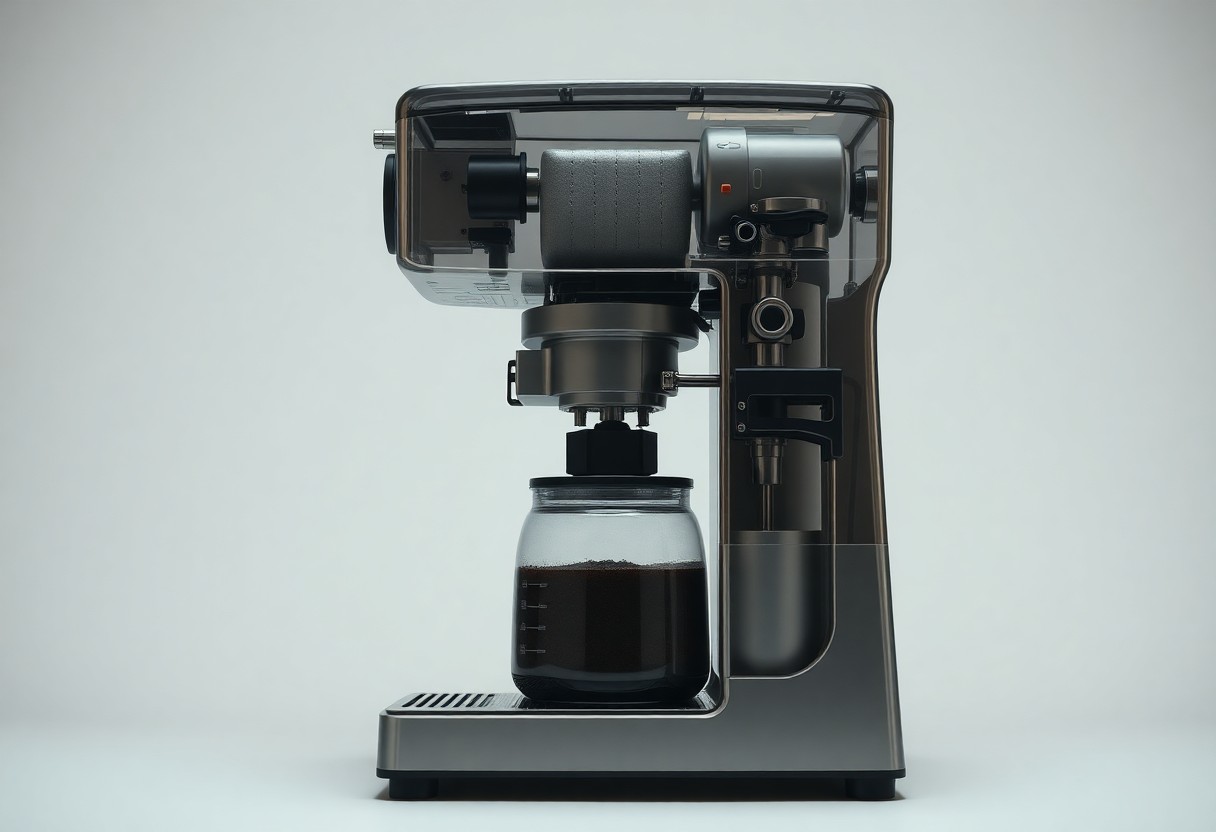
Water Systems: The Lifeblood of Coffee Machines
The water system of your coffee machine plays an imperative role in determining the taste and quality of your coffee. Water quality and temperature significantly affect extraction efficiency, impacting the final flavor profile. Understanding the components and mechanics of these water systems helps you optimize your brewing experience and ensure a consistent cup of coffee every time.
Internal Tanks vs. External Reservoirs: Pros and Cons
Deciding between internal tanks and external reservoirs influences the convenience and performance of your coffee machine. Here’s a breakdown of their advantages and disadvantages:
Pros and Cons
| Internal Tanks | External Reservoirs |
|---|---|
| Space-saving design | Easy refill without removing the machine |
| Lower risk of leaks | Higher capacity for water storage |
| Fewer moving parts | Allows for easy water filtration installation |
| Aesthetically integrated | Better visibility of water levels |
| Potentially more efficient | Greater flexibility in placement |
Filtration Systems: Enhancing Water Quality
Using a filtration system in your coffee machine elevates the quality of the water utilized for brewing, directly impacting the flavor and aroma of your coffee. By reducing impurities, chlorine, and mineral buildup, these systems help preserve the delicate balance of flavors that high-quality coffee beans offer.
Common filtration methods include activated carbon filters, reverse osmosis systems, and water softeners. Activated carbon filters effectively eliminate chlorine and sediment, ensuring a cleaner taste. Conversely, reverse osmosis removes up to 99% of dissolved solids, providing exceptionally pure water. Regular maintenance of your filtration system is imperative, as dirty filters can adversely affect your coffee’s taste. Investing in a good filtration system not only enhances flavor but also extends the life of your coffee machine by preventing scale buildup and reducing maintenance needs.
The Interface: User Experience and Control Mechanisms
The interface of a coffee machine plays a vital role in your overall brewing experience. A well-designed interface ensures you can easily navigate through settings, adjust parameters, and access features without confusion. Whether it’s a simple one-button operation or a more complex touch screen, the key focus should be on making your coffee-making routine seamless and enjoyable.
Manual vs. Programmable Features: Choosing Your Convenience
Your choice between manual and programmable features can significantly influence your daily coffee ritual. Manual machines offer hands-on control and the ability to customize each cup according to your preferences, while programmable options allow you to set it and forget it, delivering coffee on a schedule, which can be a lifesaver on busy mornings.
The Importance of Display Screens and Notifications
In today’s technology-driven world, display screens and notifications add tremendous value to your coffee-making process. Many machines now feature intuitive interfaces that provide real-time feedback, from preheating alerts to brew time remaining, enhancing your user experience.
Display screens provide not only crucial information but also contribute to an interactive user experience. For instance, some advanced machines can even connect to your smartphone, sending real-time updates about water levels, cleaning cycles, and brew status through notifications. This level of connectivity ensures you stay informed, allowing you to maintain your coffee machine effectively and enjoy a perfectly brewed cup every time. Additionally, features such as recipe guidance and preset selections boost your confidence in brewing while minimizing the risk of errors. This combination of technology and usability elevates your coffee experience immensely.
Maintenance Made Easy: Essential Components for Longevity
Keeping your coffee machine in peak condition hinges on understanding its vital components. Regular maintenance not only ensures the machine operates efficiently but also extends its lifespan. Implementing straightforward practices helps avoid costly repairs and enhances your daily coffee experience, transforming each cup into a delicious treat.
Cleaning Systems: Preventing Build-Up and Enhancing Flavor
Utilizing effective cleaning systems is key to preventing mineral build-up and coffee oils that can alter flavor profiles over time. A simple routine of descaling your machine every few months with a vinegar solution or a commercial descaler keeps your brew fresh and vibrant. Regular cleaning of removable parts, such as filters and brew baskets, ensures that your coffee remains free from old residue, allowing the natural flavors to shine.
Replacement Parts: When and How to Upgrade
Enhancing your coffee machine’s longevity can also involve timely replacement of parts. Pay attention to signs indicating when certain components, like the water filter or pump, are failing. Generally, filters should be swapped every three months, while gaskets might need replacing after a year of consistent use. Upgrading crucial parts when they show signs of wear or declining performance can drastically improve brewing efficiency and flavor quality.
Replacement parts can be a wise investment in your coffee journey. For example, installing a higher-quality water filter can brighten the taste of your coffee, while a new brew group can restore the machine’s pressure and extraction capabilities, leading to richer flavors. Research specific parts compatible with your model, using genuine manufacturer parts when possible; this ensures optimal performance and protects the machine’s warranty. Make a habit of inspecting and replacing worn components to maintain your coffee machine in prime condition.
Conclusion
So, as you explore your coffee machine, understanding its components enhances your brewing experience. From the water reservoir to the heating element, each part plays a significant role in creating that perfect cup of coffee. By familiarizing yourself with these elements, you can troubleshoot issues, customize your brewing methods, and ultimately enjoy a richer coffee experience that aligns with your preferences. Investing time in learning about your machine will empower you to make informed decisions, leading to delightful coffee moments in your daily routine.
FAQ
Q: What are the main components of a drip coffee maker?
A: A typical drip coffee maker consists of several key components: the water reservoir, which holds the water before brewing; the filter basket, where you place the coffee grounds; the heating element, which heats the water; the brew basket, where hot water flows through coffee grounds; and the carafe, which collects the brewed coffee. Each part plays an important role in the brewing process, resulting in your final cup of coffee.
Q: How does the heating element in a coffee machine work?
A: The heating element in a coffee machine is responsible for heating the water to the optimal brewing temperature, typically around 195°F to 205°F (90°C to 96°C). When the coffee machine is turned on, electricity flows to the heating element, causing it to heat up. As water is drawn from the reservoir, it passes over the heating element, where it is warmed before being dispersed over the coffee grounds, facilitating extraction of flavor and aroma.
Q: What role does the coffee filter play in brewing coffee?
A: The coffee filter serves multiple purposes in the brewing process. It separates the coffee grounds from the liquid, preventing sediment from ending up in the final cup. Additionally, filters can enhance the flavor of the coffee by blocking certain oils and impurities, depending on the filter type used. Common filter materials include paper, metal, and cloth, each offering distinct qualities and impacts on the taste of brewed coffee.
Q: Why is the water reservoir an important part of a coffee machine?
A: The water reservoir is a critical component of any coffee machine because it holds the water needed for brewing. The size and design of the reservoir can affect the number of cups you can brew at once and ease of filling. Some advanced models may have built-in features to monitor water levels or utilize filtration systems to improve water quality, impacting the overall taste and quality of the coffee.
Q: What is the purpose of the steam wand in espresso machines?
A: The steam wand found in espresso machines is used primarily for frothing and steaming milk. By passing pressurized steam through the milk, it creates microfoam, making it important for preparing beverages like lattes and cappuccinos. Mastering the use of the steam wand allows baristas to create creamy, textured milk that enhances the flavor profile of espresso drinks, providing that café-style experience at home.

